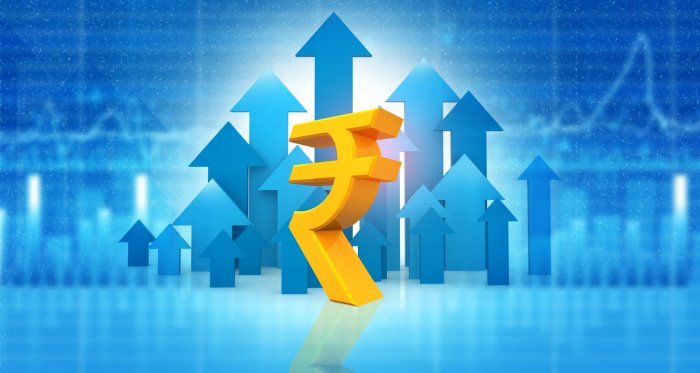The announcement in the budget about the introduction of Digital Rupee and the 30% tax on the income from virtual digital assets has set the proverbial cat amongst the pigeons. Due to a lack of clear and holistic understanding of such technology based financial instruments, there are doubts in the mind of one and all on these aspects. To have a clear appreciation of why Government chose to take the decisions it announced in the budget, let us first examine the most important decision of introduction of the RBI backed Digital Rupee, followed by the taxation on virtual digital assets.

What is Digital Rupee? Digital Rupee is a Central Bank-backed Digital Currency (CBDC). It is not a decentralised cryptocurrency like Bitcoin nor is it a Non-Fungible Tokens (NFT) like Ethereum. Digital Rupee is nothing but a virtual currency having the same intrinsic value of a physical rupee which is a fiat currency[1], which draws its value from the demand and supply of the currency in the market. This digital currency will not be on a decentralised distributed ledger but shall be an RBI controlled centralised Blockchain. This implies that the Digital Rupee is not the same as a virtual digital asset and shall enjoy a privileged status of being the only recognised and legitimate digital currency in India. The Government and the RBI will never be comfortable with a private non state controlled Crypto currency in the country as it has serious potential to undermine the country’s economy and may lead to high levels of tax evasion and money laundering.
How is the Digital Rupee different from Rupee transactions done through any digital platform such as credit cards, digital applications or UPI wallets? The existing digital platforms, while doing digital transaction, still transact physical rupees at a fundamental level. This means that the RBI has to print all those currencies and make it available to all the banks which are connected to these digital platforms. The Digital Rupee on the other hand is a virtual currency which runs on a powerful blockchain based cryptographic algorithm which secures the transactions. This implies that this virtual currency can be legitimately transacted on a peer-to-peer basis, while the government will have the complete visibility on the entire transaction end to end. This shall give the Government a greater leverage to legislate and bring laws that can bring additional revenues on areas that otherwise escape the tax net.
Decentralised Crypto currencies are often generated by a process called mining. However, in case of Digital Rupee, the RBI shall decide the quantum of currencies that are to be generated. The value of the rupee then, shall be equal to the fiat system value of all the money printed physically by the mint and generated by the digital ecosystem. It is therefore clear that the Digital Rupee shall facilitate ease of transaction while enhancing the security of transactions and reducing the cost of various overheads involved in printing, handling, maintaining and securing the physical rupee. The ownership of Digital Rupee is therefore not akin to owning a Bitcoin or Ethereum like currency whose market values are very volatile and therefore tempt greedy investors with a preposition of making quick money. It is to be borne in mind that the intrinsic value of these currencies is zero.

Currencies like the Bitcoin and Ethereum offer anonymity of ownership which is the main reason why people choose such assets. While the Indian Government has taken all possible legal measures to ensure that every transaction can be tracked when a physical rupee is used to buy a crypto currency, it still has some serious gaps in tracing crypto transactions. For example, if an investor invests Rs 1000 and buys a crypto currency, the government can easily track the process through a mandatory KYC requirement imposed on exchanges that operate inside the ambit of Indian laws and its jurisdiction. However, if a person receives crypto coins through the process of mining or as a consequence of a peer-to-peer transaction from a third party, such transactions cannot be traced by the Indian Government. It is therefore important to note that for some people, Crypto currencies shall still be seen as a better digital asset than a Digital Rupee due to the singular reason of anonymity that it offers.

The Digital Rupee still holds multiple aces up its sleeve and could potentially unleash a plethora of benefits to the economy and Government in unimaginable ways, provided the plan is executed without any hurdle or confusion. One of the biggest challenges in the Indian economy is the relatively low and poor tax compliance. Nationalistic rhetoric cannot boost the revenue collected through direct tax beyond a certain point. Unless technology is designed, implemented and adopted in a transparent fashion, financial transactions can never be traced or formalised. The Digital rupee may just be the tool which could potentially be the right answer to solve the puzzle of tax compliance amongst the people.
One of the key concerns of a Digital rupee is the fear that people may have less deposits in the bank as the currency is primarily stored in a crypto wallet. This may impact the ability of a bank to lend and consequently lead to reduced revenues. The fundamental notion behind such a theory is that money is deposited in the bank for securing it. Beyond security the returns offered by the banks in terms of interest on the deposit also needs to be taken into account. A Digital Rupee shall mean less overheads and expenses, which in turn could mean a higher return for money deposited in a bank. If the RBI delegates the responsibility of managing the crypto wallet with a defined set of guidelines, then the money in the wallet is as good as a bank account and therefore the Digital Rupee would not cause much disruptions in the system as it exists on date. The job of RBI is to act as a watchdog and draft policies rather than getting into services and management of technology. The crypto wallet, recognised by the RBI and operationalised by the registered financial institutions, can manage the issue of credit and liquidity effectively, while ensuring principles of uniformity, standardisation and security of the currency in the digital regime.
The Digital Rupee will only make sense if it is proliferated significantly. While it would not be advisable to completely replace the physical currency with the Digital Rupee, a gradual and regulated infusion of the Digital Rupee in the market while replacing the physical currency must be adopted. Any half-hearted approach could potentially prove to be counter-productive, squandering in the process, all the potential benefits a digital currency can bring to the economy. The eventual target should be to replace the physical currency to at least 60% to 70% levels in an agile timeframe. It is very important to send the right signals, otherwise market sentiments may get confused leading to confusion and chaos.
The Digital Rupee will have to cross the first hurdle of adoption by the people. The following steps could be taken by the government to overcome this hurdle.
- To begin with, the government may create a free digital wallet for each person with an Aadhaar Card and a Voter ID along with a PAN card. All the three identities may be technically merged into a single virtual token which shall be the finger print for every digital wallet.
- The Government may transfer all direct benefit transfers (DBT) through various subsidies to these digital wallets during the initial phase to ensure proliferation of the digital rupee.
- It may incentivise the retail business with lesser GST rates if the transaction is carried out with a Digital Rupee. A 10% discount passed on to the customer may effectively compel the retailers to migrate to a formal banking platform. The government shall pass on the benefits accrued due to lesser overheads to the retailers and the customers for some time.
- It may disburse all salary and bill payments as Digital Rupee.
- The printing of new currencies shall be paused till such time the Digital rupee reaches a certain threshold say 50% to 60%. The eventual physical cash may be allowed to operate only at about 30% of the current level and a calibrated decision towards this end may be taken based on the behaviour of the economy and the response from the people.
- Banks shall have significant downsizing of HR and the reduced overheads in the banking system shall compensate for the revenue shortfalls arising out of the digitisation of the rupee.

Once the targets are met, the discounts offered could be gradually withdrawn. Since there is a likelihood of a widened tax net, the tax rates would stabilise at the discounted levels or at a slightly higher level, based on the economic situation at that point of time. One of the indirect benefits of the digitisation of the rupee shall be that most of the accounts and financial related jobs shall be significantly downsized as AI based Fintech automation platforms will take centre stage. The potential downsizing of people with finance background shall be as much as 80% and these jobs shall mostly get transferred to the IT tech-based jobs. This would result in lesser government jobs and a much leaner government work force. The Tech jobs shall mostly be in the private sector, and therefore the productivity and accountability shall be better. The process of audit and compliance also shall get automated to a large extent leading to better compliance, with little scope for manipulation The overall credit-worthiness, from the individual to business level, will show a dramatic improvement due to the higher compliance, which will result in lesser NPA’s for the banking sector as a whole.
To achieve this, the technology backbone would require a higher degree of resilience and reliability in its architecture. Without a 24×7 power and internet availability, these technologies cannot be sustained, as outages beyond a certain threshold could potentially impact business big time. Offline protocols can introduce security vulnerabilities in the system and therefore, the technology architecture has to be much more robust and resilient, with high availability, if the Digital Rupee has to take off initially.
The boost to the economy shall however come from an altogether different quarter. Indian economy has approximately 93% of its work force in the informal sector. This means a significant part of our economy is in the informal sector and the GDP of the country does not totally account for the actual value of the economic activity. One of the interesting observations of the unorganised sector is that the same owner often creates multiple entities wherein one entity is formal while the others are informal. Based on the situation and comfort, transactions are seamlessly moved between the formal and informal entities to evade tax. The informal entity needs cash to sustain its activity unhindered on a large scale. This is where proliferation of the Digital Rupee beyond 60% shall make it difficult for such business to carry on and may need better tactics and strategy to survive. The demand for a Digital Rupee by the work force due to better value preposition in the market may compel such owners to switch to the Digital Rupee instead of cash.

The government may also impose a transaction tax for deposit or withdrawal of cash in any bank beyond certain limits. This may create another hurdle for free flow of money to and from the system. The details of the deposit may also find a trail in the crypto wallet which may ensure a reasonable trail of transaction and flow of the currency without much overheads.
All these moves may force the informal sector to move into the formal sector, which may effectively boost the GDP figures significantly in a short span of time. This could be the boost the government was looking for to stimulate the GDP figures towards the much hyped 5 Tn economy mark. The projected 10% Y-Y growth in the next three years would imply a growth of 30% for the economy by the year 2024. Add to this a one-time possible correction of at least 30% to 40% due to the formalisation of the informal economy and the net growth would be around 70% if the growth rates are compounded Y-Y. 70% growth in 3 years would attract better FDI which could boost the market sentiments further resulting in the perfect recipe for a big-bang boom of the economy. The market sentiments may give a good push taking the overall growth to well beyond 100 percent of the present GDP levels. This is the only way the country can hope to touch the 5 Tn GDP size in a faster time-frame.
The 30% tax levied on the digital assets is seen by many as a clandestine move to legitimise the Crypto currency in India. This again appears to be a smart move by the government to discourage the use of such speculative instruments while staying clear of banning the technology. Banning would be difficult to justify in a court of law, as the government would need a similar technology to implement the Digital Rupee. Hence, the Government, by announcing 30% tax on digital assets, has standardised the tax for any speculative income arising out of such investments that was left out till date. In short, this taxation is considered at par with the income raised on activities like gambling which are taxed at 30%.
This move will discourage all those involved in speculative crypto investment by fulfilling the KYC requirements through established Crypto stock exchanges which are registered as legitimate Indian companies. There is also a possibility of these exchanges being brought under the GST regime for the transactions they do. So, if they are brought under either the 12% slab or the 18% slab, it shall sound the death knell for legitimate crypto investment in the country.
Any legitimate investment should have adequate checks and balances in the system with protection of the interest of the gullible and naïve investor. Since over 40,000 crore is invested in these platforms, these are the next breeding grounds for a major scam where people may be conned of their money overnight. Since these assets have zero intrinsic value, the possibility of insolvency of the owning company may lead to complicated legal battles which the investors would find difficult to sustain and win in a court of law. Such instruments, therefore, have potential to cause serious political turmoil and the move to tax is one more step to keep the tail clear so that potential scamsters do not find an easy method to stage a big scam. People who still consider such investments would be doing so at their own risk which then could be used as a shield to defend if there is any untoward incident in the fintech market.
It is therefore clear that both the moves announced in this budget have serious potential to transform the economy towards a higher growth trajectory while ensuring better compliance. A higher GDP number means a robust double-digit growth which effectively means higher revenues and less fiscal deficit. If the pandemic subsides without causing further problems for economy and no major conflicts happen, India is set poised to a double-digit growth and the march towards the 5 Tn economy appears most likely be on course. The ruling party can, therefore, potentially seal the fate of the election, even before it begins in May 2024.
Author Brief Bio: Wg Cdr S Sudhakaran (V) is MD & CEO, QuGates Technologies
End Notes:
[1] Fiat money is a government-issued currency that is not backed by a physical commodity, such as gold or silver, but rather by the government that issued it. The value of fiat money is derived from the relationship between supply and demand and the stability of the issuing government, rather than the worth of a commodity backing it.




